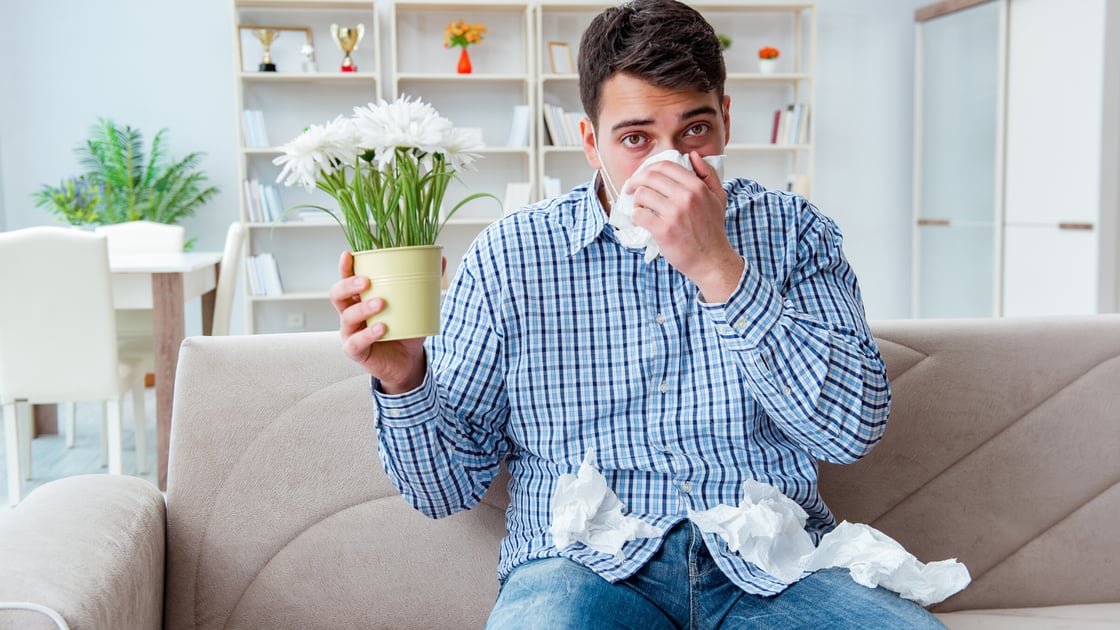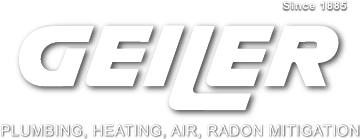5 Pollutants That Cause Indoor Allergies
May 4, 2017 •Reid Geiler

To prevent an allergy or asthma attack it would seem to make sense to stay indoors as much as possible and keep all your windows closed, especially when pollen counts are the highest. However, research show that the levels of pollutants inside your home can actually be greater than the levels of allergens outside your home. For allergic people that’s really bad news.
If you live in Cincinnati or Northern Kentucky you’re in one of the most severe allergy zones in the United States. In fact, the National Resources Defense Council named Ohio as the “wheeziest, sneeziest state” in the country. According to their 2015 study, pollen season has increased by 12-26 days over the past few years.
Here’s a list of five of the top pollutants that cause indoor allergies that are found in most homes and what you can do about them yourself. I must stress, however, that the most efficient and effective way to combat the pollutants that cause indoor allergens is by using a whole house air quality approach that includes filtration, humidification, and dehumidifcation systems that work along with your central heating and central air conditioning. (Scroll down to learn more about the whole house air quality approach).
5 Pollutants That Cause Indoor Allergies (& What To Do About Them)
- Pollen
Pollen is a fine, powdery substance that shows up in great quantities during spring and fall. Without pollen there would be no trees, plants or flowers; we human beings simply couldn’t exist. Wind, insects, and animals transport pollen from one plant to another. And it’s the most frequent culprit that causes allergy and asthma attacks.
People who are allergic to pollen can get some relief by staying indoors and keeping their windows closed during peak pollen seasons. Unfortunately, it’s nearly impossible to keep pollen outside where it belongs. It hitches a ride into your home on your shoes, your clothing, and on your pets.
The level of pollen you’re exposed to in your home can be very high.
What to do about indoor pollen:
- Keep your windows shut at all times.
- Keep your pets outside as much as possible.
- Brush your pets and wipe off their feet before you let them in.
- Keep your car inside the garage.
- After gardening or yard work, strip down and shower immediately (place your work clothes in a plastic bag until you can wash them).
- Wear a hat or bandana while doing yard work and wash your hair immediately when you come in.
- Empty your vacuum cleaner bags outside.
- Avoid using your porch or patio, especially during high pollen season.
- Mold and Mildew
Mold and mildew are types of fungi that travel through the air in the form of tiny seeds called spores. These spores are always on the lookout for damp places in your home on which to grow. They love bathrooms, kitchens, and basements, in particular. And they’re especially happy in wall-to-wall carpeting.
Mold and mildew are year-round problems are very difficult to remove. That’s bad news for those of you who have allergies.
What to do about mold and mildew:
- Fix plumbing leaks and roof leaks as soon as possible.
- Remove all sources of standing water in your home.
- Don’t over-water indoor plants.
- Make sure rainwater drains away from your home’s foundation.
- Wash your bedding and towels weekly and add chlorine bleach to the wash water.
- Ensure your home is well ventilated by keeping windows open as much as possible, using fans, and setting up dehumidifiers.
- Dust Mites
Dust mites are microscopic eight-legged creatures that live in every home. Regardless of how much you clean, dust mites are going to be there. They especially love upholstered furniture, carpets, bedding and even children’s stuffed animals. Unfortunately, dust mites cause indoor allergies more than any other pollutant and they’re nearly impossible to completely get rid of. You can, however, keep the levels down by being very vigilant.
What to do about dust mites:
- Cover your mattresses and pillows with dust-proof covers
- Wash all bedding in very hot water once a week.
- Replace all upholstered furniture.
- Remove carpeting and choose hard flooring instead.
- Keep the humidity level down in your home.
- Pet Dander
We just love our pets (86% of American households have at least one!). In fact, we love our pets so much that some people who are allergic to their pets still refuse to give them up. Pet dander is a combination of dead skin cells, hair, or feathers and every animal sheds it, all the time. In fact, there is some evidence that even homes containing no pets at all can contain levels of pet dander high enough to cause allergic reactions.
What to do about pet dander:
- Keep your pets outside as much as possible.
- Bar your pets from your bedrooms.
- Keep pets off your upholstered furniture.
- Vacuum your floors and upholstered furniture as much as possible.
- Choose hard flooring instead of carpet.
- Clean cages and crates frequently.
- Bathe your pet often.
- Smoke
The smoke emitted by your fireplace or wood stove can cause indoor allergies, as well. Tiny particles emitted by burning wood contain tons of toxins and can cause allergic people to have shortness of breath, wheezing and asthmas attacks.
What to do about indoor smoke:
- Use only an EPA approved fireplace or wood burning stove.
- Make sure all your rooms have adequate ventilation.
- Don’t use a fireplace or wood-burning stove as your primary source of heat.
- Get your chimney cleaned every year.
The U.S. EPA has estimated that indoor levels of pollutants can be higher than outdoor pollutant levels. Sadly, poor indoor air quality has been ranked among the top five environmental risks to our health.
We are sensitive to the fact that, for people with allergies, keeping your home allergen free can be a full time job. Plus, it’s difficult to know when to humidify, when to dehumidify, when to close the windows, when to keep them open, etc.
That’s why we developed The Whole House Air Quality Solution. This approach helps you be confident you are doing everything to control the pollutants that cause indoor allergies at a minimum all year long. Here’s how it works:
Our qualified and certified technicians will analyze your home. They’ll look for trouble spots, measure the levels of pollutants in every room, and make recommendations for what you can do yourself. Then they’ll put together a Whole House Air Quality plan to make your home as allergen-free as possible.
The Whole House Air Quality Solution often includes the installation of air filtration systems, humidifiers, dehumidifiers and UV germicidal lights, as well as duct repair and replacement and duct sealing. (We use only the highest-rated products).
There’s an added bonus to the this approach: it not only reduces the pollutants that cause indoor allergies, it can also make a substantial reduction in your home's energy use saving you thousands on your energy bill over time.
To get more information or schedule a Full House Air Quality inspection for you home,
Please call: 513-574-0025
